Jon Tooher provides information on gear for deer hunting, stalking advice and tips, campsite hunting locations and more in his guide to woodland deer stalking
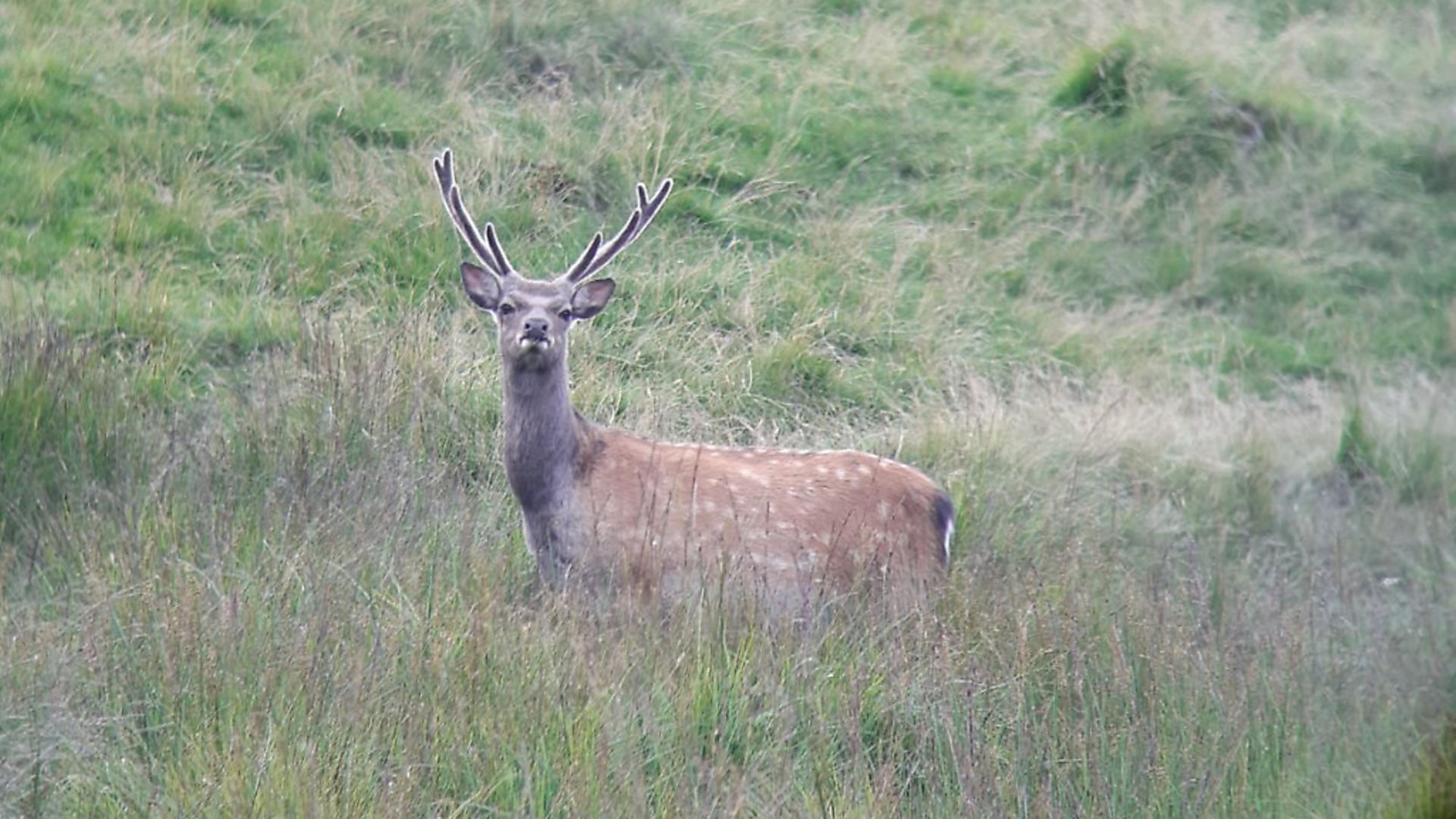 credit: Archant
credit: Archant
Unzipping the tent, the fresh cool autumn breeze that greeted my face was welcome. As I looked upwards through the canopy of the conifer trees into the night sky, I could see the low-hanging harvest moon, large and gleaming in the starlit sky. The moon was providing enough illumination to see about 70m of the forest floor. At ground level, there was a slight fog. The temperature was about 2°C, and there was a slight south-westerly breeze. This hunt would take us into the dark, mysterious forest, where the wild, swift ones live, namely, sika deer.
My brother had already woken up and was warming himself by dancing around the campfire, as the smell off strong coffee filled the air. Our conversation turned to the day’s hunting that lay ahead, anticipating, hoping that the day’s hunt would be more successful than the previous day. It was October, but the temperatures were unusually warm, and the deer had gone to ground, not following their usual patterns – in fact, they’d been downright uncooperative for an unusually prolonged period!
Though deer had been leaving tracks and droppings, alas there was little to no physical evidence of the deer that left them. This hunting trip, so far, had tested us like no other. The current moon phase was not helping either, providing generous illumination, thus allowing the deer to feed all night – this was frustrating for us, as it ensures the deer are less active during the day. But when things got tough, we hunted harder. The mountains have no ego; it’s us humans who try and change conditions. And yet, the weather and the mountain continue on their cycles, and so they have since time immemorial.
On this hunting trip, we were getting to grips with the cull designated for this forest. The cull plan is adjusted annually by our hunting group, and in this forest the plan is always the same: in stag season, cull animals take priority, and when this is achieved, we then turn our attention to taking a mature stag.
Regardless of which deer species is being hunted, the methodology of woodland stalking remains the same. My experience of woodland stalking comprises fallow, sika, roe and red deer. I have found that the various woodland species, though different in many ways, respond to the same course of action.
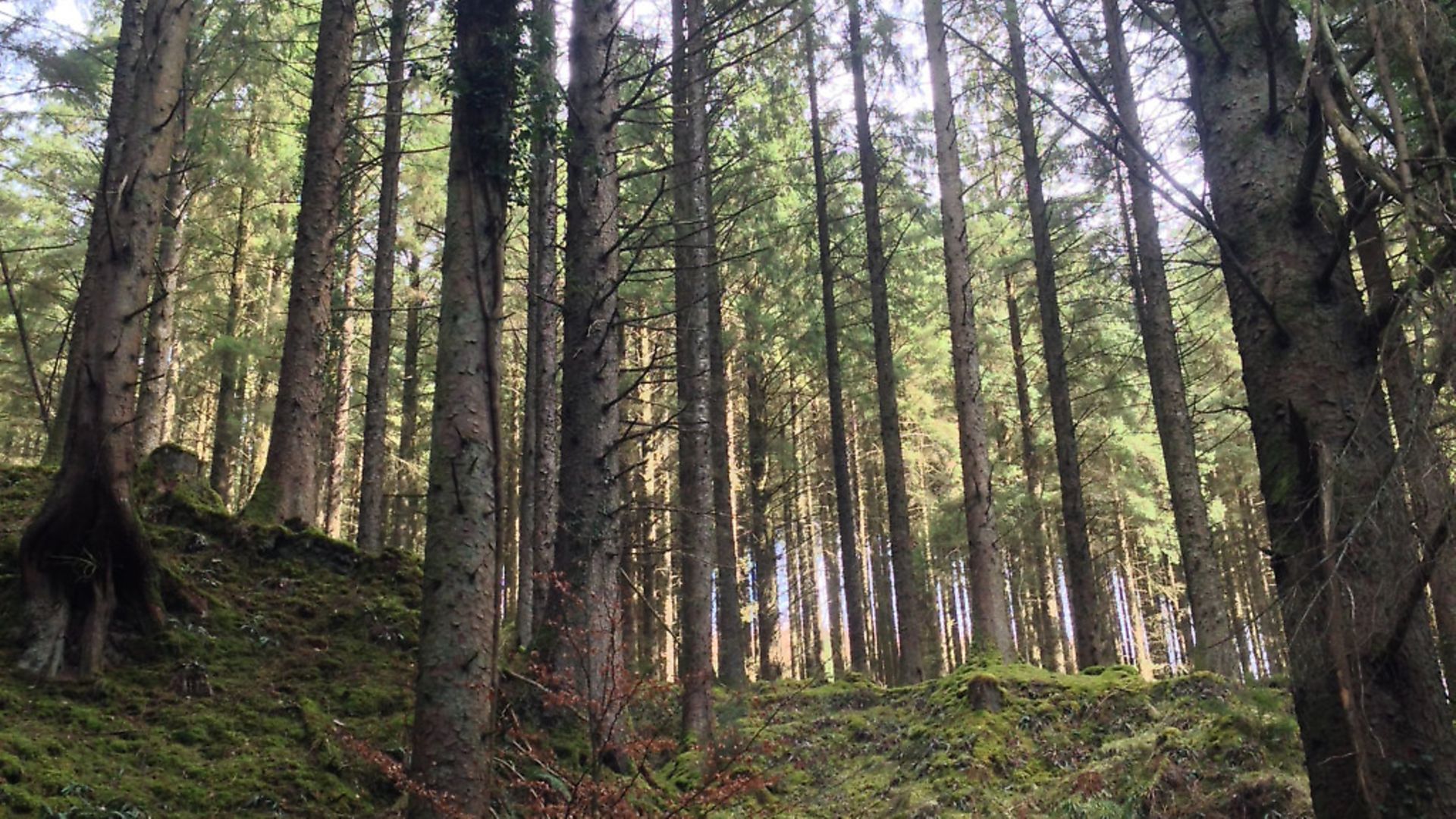 credit: Archant
credit: Archant
Campsite locations
Choosing to camp out on your hunting grounds allows you to fully immerse yourself and familiarise yourself with your equipment. It’s a superb way of embracing the ways of the past and earning your venison.
On this trip, we’d packed enough food for four days of hunting. We camped near a river for close access to fresh drinking water, but drinking rainwater is never a problem in the temperate climate of Ireland. When choosing a campsite location, look for areas with bracken or ferns, as this usually means it’s an area of dry ground. Avoid areas with large, old trees, as old trees can cast their limbs in high winds. For example, beech trees are notorious for their branches falling without advanced notice.
Look for areas with a natural embankment – this will act as a windbreak and also provide concealment. Seek out an area that is relatively flat, as you will also need natural drainage when it rains. Favour a site that is large enough to accommodate your tents comfortably. Choose a location that feels physically warm and out of the prevailing winds – perhaps a clearing that allows natural sunlight in, as it’s nice to stock up on your vitamin D when around camp.
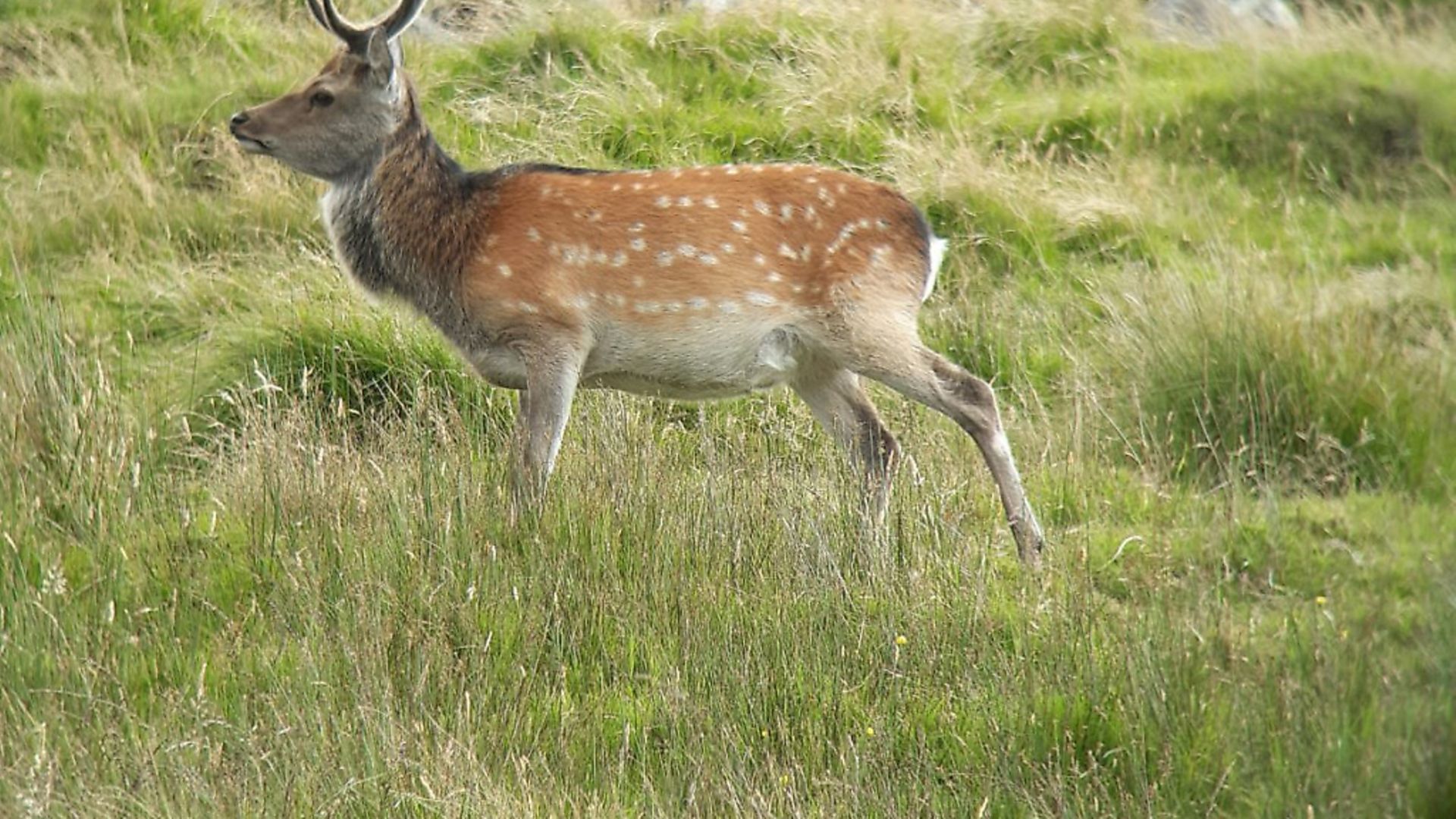 credit: Archant
credit: Archant
Kit list
Woodland stalking is where I cut my teeth – and it afforded me my introduction into deer stalking, for which I have refined my methodology and equipment. In its very nature, woodland stalking requires stealth, severe discipline and an in-depth knowledge of the hunting ground.
To be successful in woodland stalking, you should take the time to identify areas where deer settle at different times of the year and the ways in which they react to different weather conditions. This can only be learned by scouting throughout the year, not a just a week before hunting season opens.
In woodland stalking, one needs to consider a number of things. The most important is your equipment. Solid and dependable equipment can be the difference between success and failure in the mountains. When woodland stalking, you need to be flexible and fast. It may sound like a contradiction, but speed when a shot presents itself is only possible after stalking at a slow pace for a number of hours.
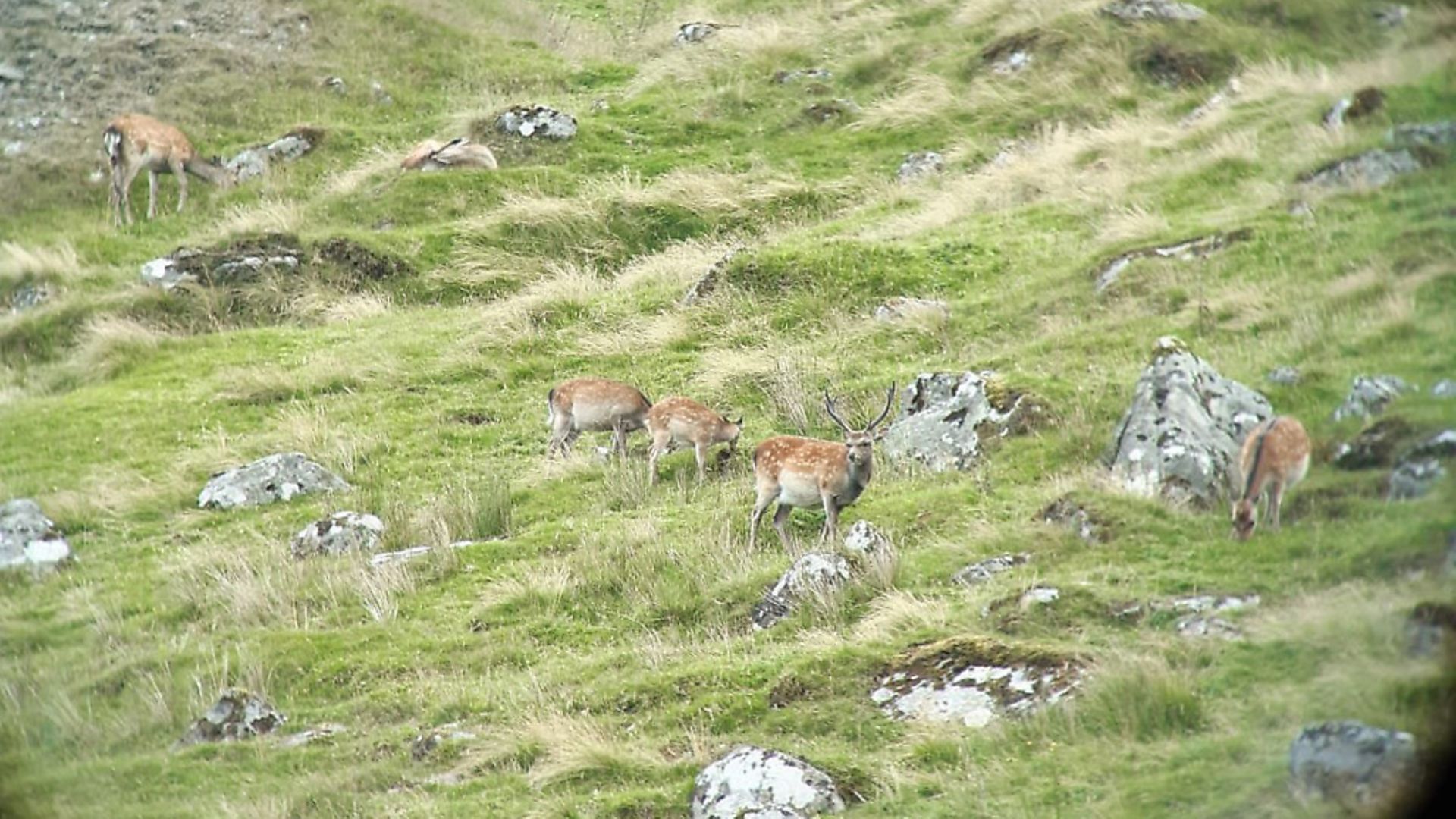 credit: Archant
credit: Archant
Optics
I use Swarovski 10x42 rangefinding binoculars. I use 10x, but any binocular from 7x upward in power will suffice on the hill. In the forest, an integral rangefinder is advantageous. A handheld rangefinder will do the same job.
Learning to read distances with the naked eye is also a skill that one should develop. You can practise by first picking a point and judging the distance – either pace it or use a laser to confirm. Sometimes, you won’t have time to use a laser, and having developed this skill of judging distances out to 250m or so will pay dividends.
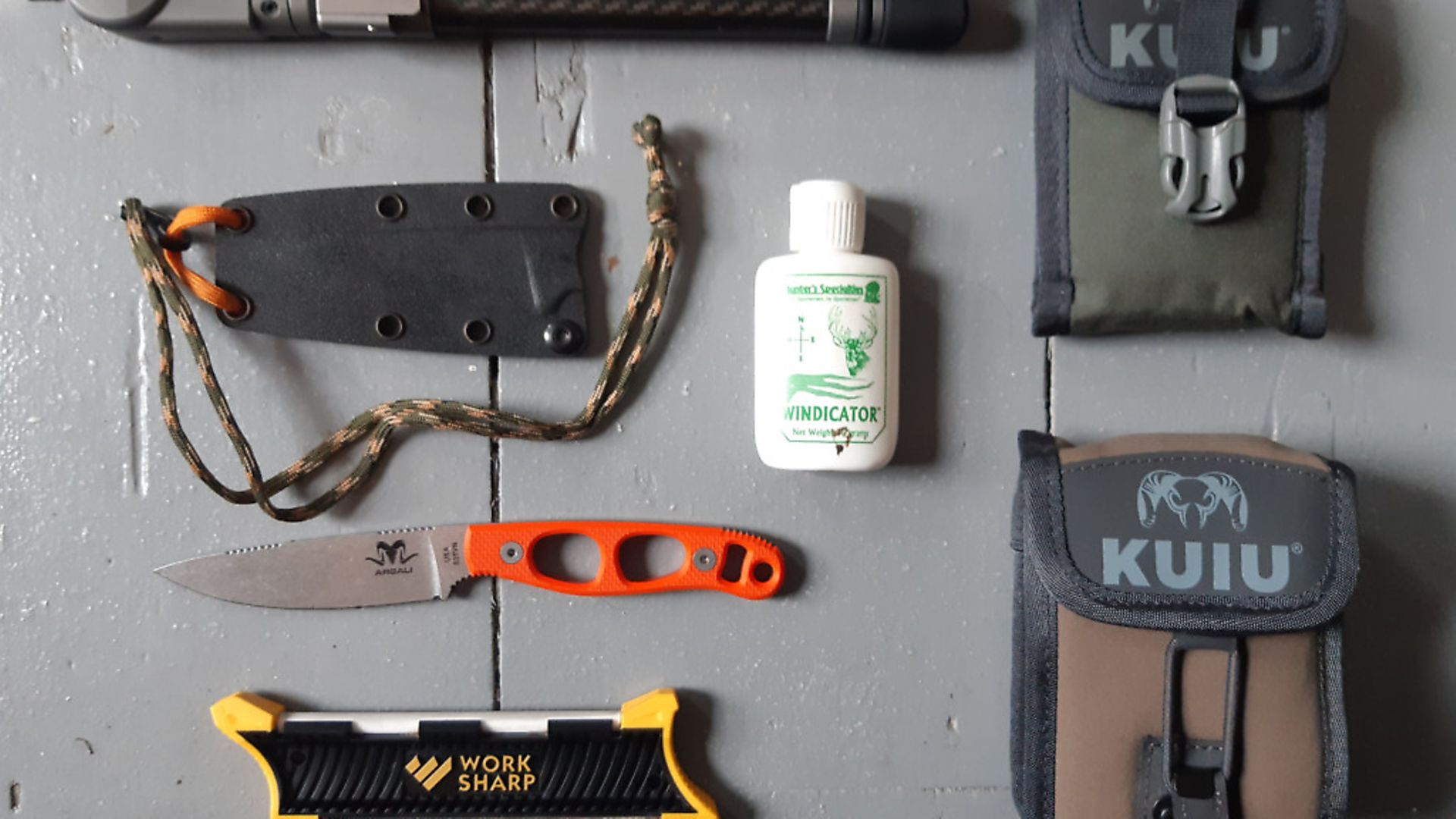 credit: Archant
credit: Archant
Rifle
For woodland stalking, I use a Blaser R8 rifle in 6.5x55 calibre, held in a Raven Arms carbon fibre stock. The Raven Arms M80 stock was designed and built for mountain hunting. It’s super rigid and seriously lightweight. Swapping the original Blaser Success stock over to the Raven Arms shaved a whopping 2.5kg off my rig.
The M80 stock has an integral bipod adaptor. When the bipod is not in use, it allows for an uninhibited and comfortable standing shooting position. The benefit of a lightweight rifle is that it’s pointable; a manoeuvrable rifle possesses obvious advantages in both woodland and mountain hunting.
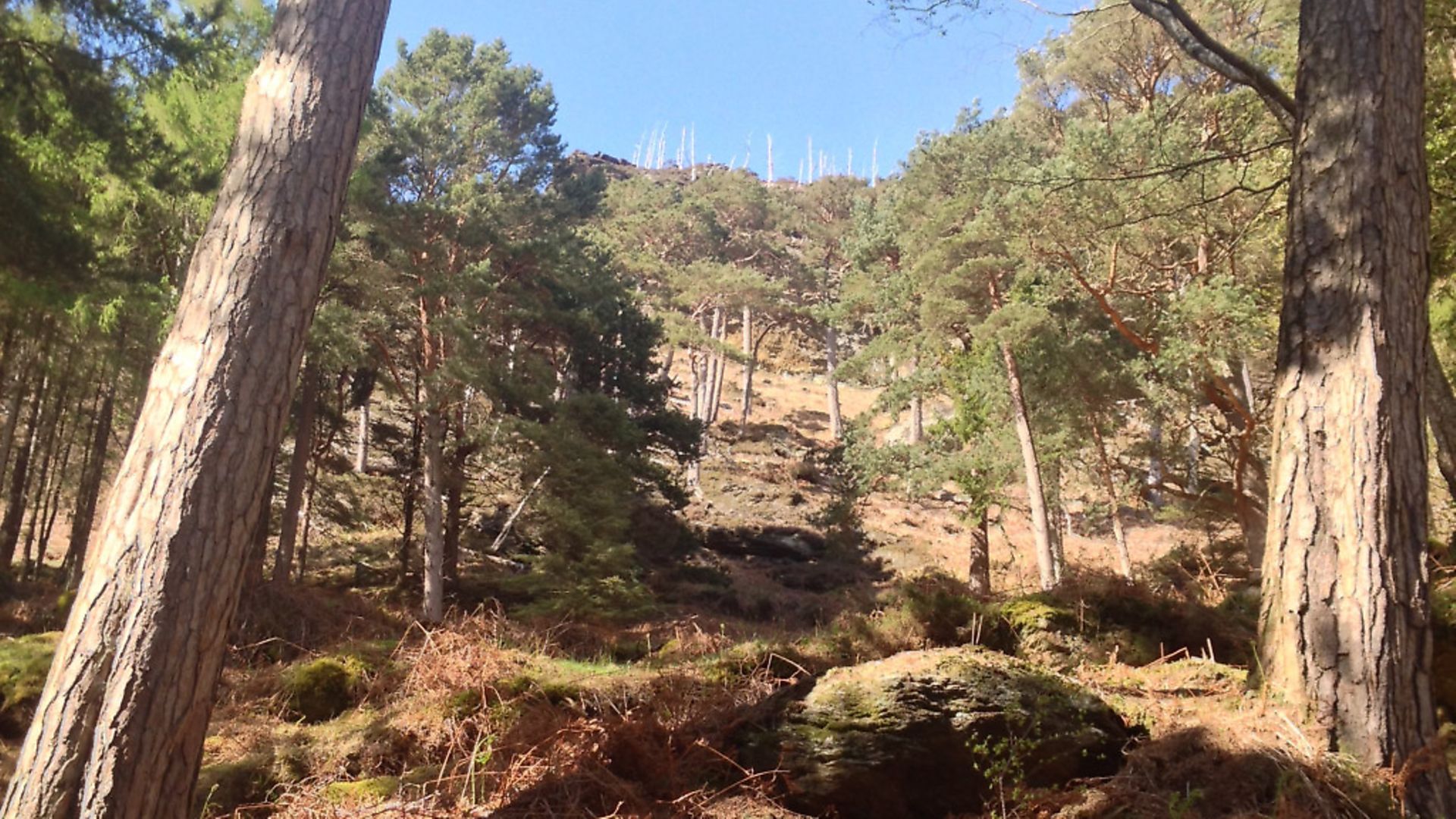 credit: Archant
credit: Archant
Rifle scope
Out of respect for whatever species you are hunting, you should have your rifle perfectly zeroed. ‘Close enough’ is not good enough. You should strive for perfection (a minimum of 1” from a three-shot grouping). Choose ammunition that gives the best terminal results. A round that produces a 1” or 0.75” group is better than a 5mm group from ammunition that does not end the life of the deer quickly and humanely.
I use a variable scope for woodland stalking, usually set at 6x or 8x magnification. The distances are never too far when woodland stalking, and, from experience, you always have time to wind the magnification up on your scope, whereas you rarely have time to wind the magnification down if combat at close quarters is required. I’d strongly advise the use of scope covers because you want a clear, uninhibited view when a shot presents itself.
An illuminated reticle on a riflescope saves valuable time in getting onto the target area of a deer. I would recommend, if you can, you use a scope with a red dot that can be adjusted to suit the lighting conditions.
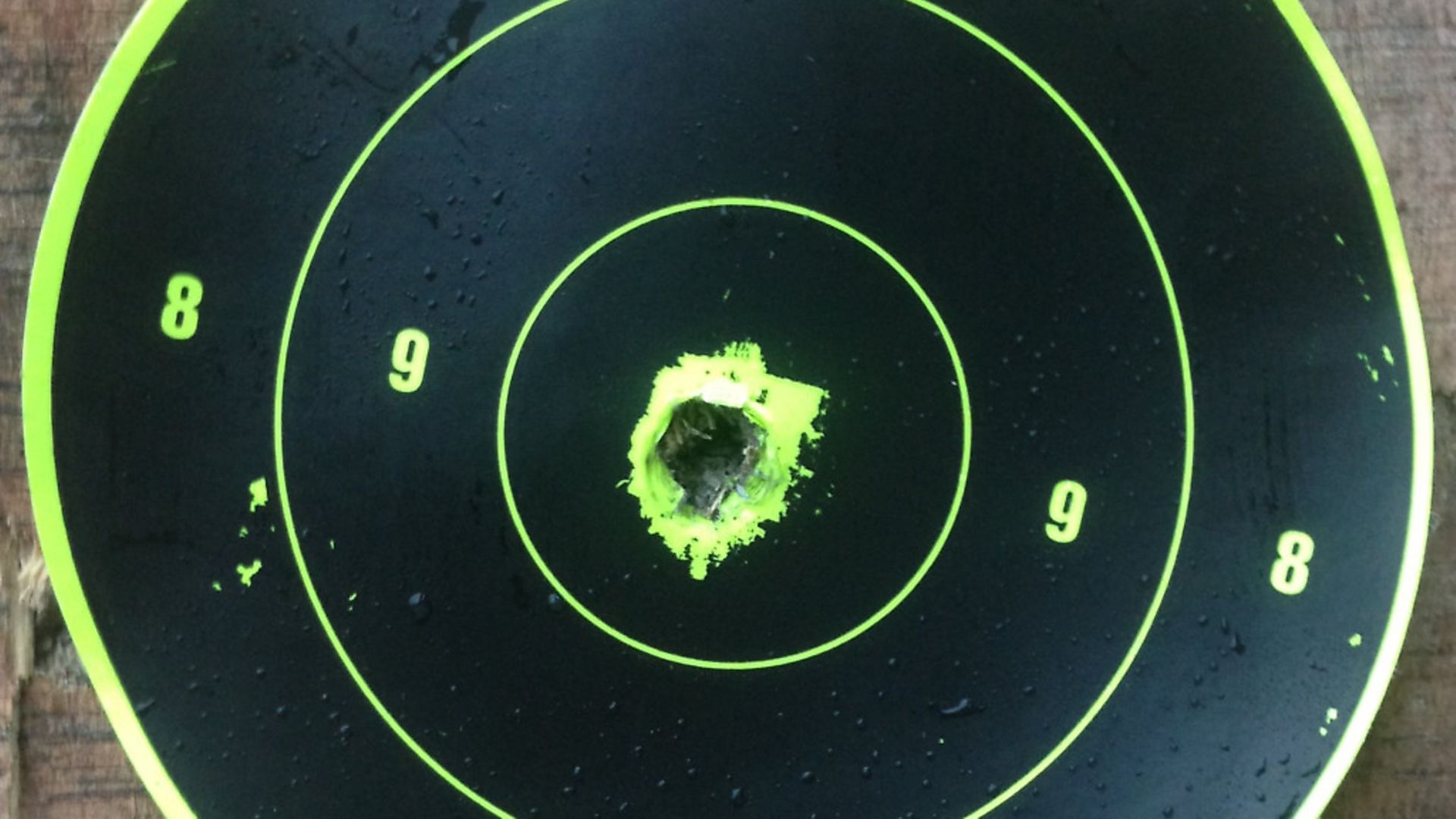 credit: Archant
credit: Archant
Knife
A quality knife is one of the most overlooked and important tools. A hunter should always have one on their kit list. A deer, once successfully taken, becomes a food product and should be treated with respect and with consideration for hygiene. There are many high-quality knifes on the market, and the custom knife market has really taken off in the last few years. For less than half the price of a custom knife, one knife with a very sharp edge that doesn’t require a lot of maintenance (also supplied with a maintenance-free Kydex sheath) is the Argali knife. It’s incredibly well-made; the grip, even when wet, is superb. I need a knife that is lightweight and multi-functional with a sharp and serrated blade.
The Argali knife is ideal for caping, boning and skinning deer, including large, heavy bodies such as forest red stags. The Argali is also useful as a camping/bushcraft knife, with which to make feather sticks and start fires using a magnesium block. Its aesthetic, compact and lightweight design, combined with the blade’s high-quality steel, makes this knife the perfect companion for hunting trips.
The knife can also be used as a neck knife, or carried in your backpack – a must for any serious hunter’s kill kit. The orange-handled knife saves you tearing the forest floor apart trying to locate it after setting it down.
Knife sharpener
You’re only as sharp as your knife. A knife sharpener that can also sharpen the edge of an axe is what I need, which is why I use the Work Sharp. The Work Sharp is small enough to fit into my pocket and weighs next to nothing. Its design and build quality are exceptional. Take it from me, I have put in the time and learned my lesson from the frustration of not having a good, reliable knife sharper. So, when it comes to choosing gear, I will only recommend a product that I know works. The pocket sharpener has one side to reshape a blade and a ceramic side to polish the new knife edge. On extended hunting trips, weight is an essential consideration. You need a knife sharpener that will bring your knife blade back to where it needs to be when processing an animal.
The wind
Hunt with the wind in your face, constantly checking its direction. Always being aware of the wind is of ‘tier one’ importance in woodland stalking – or in any form of stalking, for that matter.
Deer can be forgiving to the sight of a human or to natural sounds (like a twig snapping, or a rock falling). As permanent residents in the wild, they become accustomed to such sounds – but, the smell of a human on the breeze is a completely different matter. Recent scientific reports state that a deer’s nose is between 1,000 times to 10,000 times more acute than a human’s nose. Scientists say that deer have thousands of sensitive receptors in their nostrils, which they use to process up to six smells at any one time.
I use weather apps on my phone to keep me updated on what I can expect the weather conditions to be on hunting days.
Glassing tips
When woodland stalking, my advice is to look for sections of animals, not whole animals, as it’s the movement that catches your eye. You will rarely find a deer presenting itself in full view in a woodland setting. As a deer’s legs and head are the parts that move the most, train your eye to look for those sections and allow time to glass an area thoroughly.
The hunt
The first rays of the morning sun advanced over the skyline before the sun crested the hill, illuminating the tops of the trees, as I walked out of the clearing where our campsite was located. I moved into the dark, conifer forest.
My process was: I moved about 50m into the forest and paused for five minutes. I did this for two reasons: firstly, to allow the inquisitive song birds dancing from branch to branch overhead to get used to my presence; and secondly, to allow my eyes to adjust to the changing light conditions.
Spotting a track that showed a good sign of deer, I began walking parallel to it for a while. This deer path led me through the forest for about 800m, where it ended in a three-acre clearing of lush grass. I looked at my watch; it was 6.47am.
From experience, the deer tend to move back into the forest at, or just after, first light. Having fed on the adjacent hills, the deer move deep into the forest during the daylight hours, moving in the centre of the forest, where the shadows cast by the tall, dark trees conceal them.
As I continued my stalk with my quad sticks in hand to steady my binoculars, I moved at a slow pace, methodically watching every millimetre of ground in front of me. The objective is always to find deer before they see you. When mentally plotting your route, you need to look at what’s at your feet, what will be at your feet in 25m, and where you would like to be in 100m. The rule of thumb for woodland stalking is that you travel a distance of 100m per hour. In certain terrains, you can move faster, as the need for super-stealthy mode may not be required.
I moved to a large pine tree, which broke my outline and concealed me. In the distance, I could hear a herd moving below and parallel to me. They were heading towards the clearing in the forest that provided cover and solitude. I first saw the twitching ears of a hind and then the whole body of the deer came into view.
Over the course of a few minutes, I could see that it was a herd of deer – the hunt was on! The herd in front of me was moving through the forest at a distance of 120m, comprising females with calves and followers from last season. The spiker, I could see, had an antler growth of about 4”. In my book, it was an animal showing good perspective, so it wouldn’t be considered a cull animal.
As I watched this small herd for about 10 minutes, I could see that there was a stag coming up from behind. His dark body was camouflaging him well, as he moved through the forest with his head on the ground, following the scent of the hinds. He was moving at pace, then he stopped in a clearing, and his large, black, inflated, rut-armoured body held up a young head – he’s got potential. The words of a Scottish friend of mine came to mind: “Don’t shoot the future”. Taking a younger stag with potential is counterproductive and inhibits your grounds from producing mature animals, which allows for a proper sex and age ratio.
Deer that are conscious they’re not concealed by the veil of darkness move quicker, until they are safely inside the enveloping forest. As these deer were not aware of my presence, I could allow them to carry on with their daily routine of feeding at night until shortly after dawn, at which point they would retire to the forest to rest and to repeat their four-hour cycle of browsing and resting.
The herd moved on, and, after a reasonable amount of time to ensure we didn’t meet again, I was on my way too. Having a predetermined objective, rather than just aimlessly walking around, is always a good idea. Be sure to have a plan of where you would go, or areas of the forest you want to visit on the hunt. Bear in mind that the wind may dictate your course of action – anyone who has sat by a campfire knows how often it can change!
Continuing on my stalk through this vast forest, a sudden breeze came down the hill, rustling the tree branches. I gazed up at the sky to see dark clouds overhead – it was going to rain. Rain is not a problem in itself, as it allows for softer stalking underfoot, and I can get over the need to regularly wipe my binoculars lenses, but on this occasion, within minutes, there was a complete downpour.
I find it’s best to wait and find a large pine tree. So, there I stood, waiting for the heavy rain to pass, and trying to stay positive. I headed through the dark timber to where I knew, from experience, was an area that the stags favour at this time of year. With the rain still pouring down, I had to reduce my stalking pace, which meant that reaching the clearing took some considerable time. When woodland stalking, a momentary lapse of concentration can ruin hours of work.
Peering through the trees, I could see a herd of deer in the clearing. I could only make out vague shapes, not a whole animal. Eventually, I could see there are about 12–15 deer. I inched forward to get into a position where I would have a clear view of the herd. Having got myself to where the deer were, I positioned myself just inside the forest. I deliberately stayed just inside the forest, as it’s harder for deer to make out the outline of a human in the daylight. Deer may be colour blind, but don’t be fooled; their side-mounted eyes can pick up motion a lot faster than a human eye can.
As I remained hidden, the herd commandeered the fern clad clearing at a distance of 110m.
The hinds were standing on full alert. Their gazes guided me to the master stag with his black -coated, white-tipped antlers. He was clearly the animal in ownership of this clearing and all the deer in it. The stag was moving around the hinds with his neck down and head up. His lip was curled to scent for receptive hinds. The hinds were uneasy, as the master stag was taunted by younger deer, spikers and a four-pointer. Stags tolerate younger animals that are not a threat to their position as master within the herd.
I waited anxiously, but patiently, for the stag to adopt a motionless position, allowing for a clear, safe shot. You must take not only the position of your target into consideration but also the surrounding area – you do not want to shoot or injure another animal lurking behind the intended target. Remember that once you’ve fired, you cannot recall that bullet!
It was the hinds that were deciding whether I was going to be successful or not! They sounded the reveille and started a descent into the dark, impenetrable conifer forest. The feeling of dread ran through my body. One false move, one miscalculation, and this hunt could end in disaster. Without advance notice, the hinds moved out of the clearing and into the conifer forest. The stag, now off course, was about to follow his hard-earned hinds. Moments from disaster, the Raven Arms M80 stock was in my hands, and the rifle was ready. The stag hesitated at the last second, staging his grand finale.
Just before the stag could walk into the darkness, I dropped the hammer. The stag lurched his massive, black body forward, jumping high and kicking his back legs out, showing all the signs of a heart shot. Having swiftly reloaded the rifle, I caught the last sight of the stag darting into the forest. Seconds later, I heard the crashing and breaking of branches. The stag was down.
As hard as it was, I allowed 15 minutes before looking for the stag in the forest. I always allow at least this amount of time before approaching a shot animal, as it gives the animal time to expire. If you rush, or approach too quickly, you can forcibly move the shot animals further into the forest and you may even end up losing the animal.
I noted the distance again with my rangefinder from the location where I shot the stag. I do this range confirmation when I approach from where the animal was last standing. I moved to where the stag had been shot in the clearing and, as I followed the trail, signs of deer became more apparent, noting the scuff marks in the ground where the stag had lurched forward. I found frothy blood on the fern leaves – frothy blood indicates the blood is oxygenised, so the bullet has passed through the stag’s lungs. As I followed this trail for about 10m, I raised my head to see the old warrior stag less than 15m away, lying motionless on the forest floor.
I noticed that the head and neck of the stag were lying flat on the ground, which is a good indicator that the stag is expired. After touching the stag’s eyeball to confirm that it was dead, I thanked the stag for his life and began the gralloch. I bled the stag and preformed a forest gralloch.
I made the smallest number of openings possible to keep the precious venison as clean as I could. When culling hinds or spikers, I can do a suspended gralloch, as they’re easier to manage single-handedly. Leaving the forest clearing and carrying the stag back through the forest to the campsite, while casting my mind back on this hunt, I felt glad for having taken the time to be fully prepared with my equipment in order. I looked down at my watch. It was 11.45am.
Reflections on the hunt
By passing on the opportunity to shoot younger animals that showed potential and being blessed with the opportunity to take the right stag from the forest, I now knew that this hunt had left the herd of deer in the forest in a better position than when I’d found it. Proper deer management requires grit, determination, patience and practice.
The wind plays no politics, the mountains offer no favours, and the trees will probably always be there. The deer, however, are not an endless resource that can be taken for granted; they require management and respect. It’s not the hunter who fells the forest or drains the marsh. We require wild places as much as the deer do and we want to preserve them for years to come.
This article is dedicated to my brother, Andrew; there is no other person I would rather be in the deer forest with. Keep on dancing!